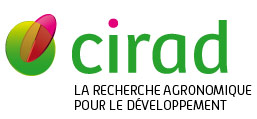Seawater and freshwater challenges affect the insulin-like growth factors IGF-I and IGF-II in liver and osmoregulatory organs of the tilapia
Link K., Berishvili G., Shved N., D'Cotta H., Baroiller J.F., Reinecke M., Eppler E.. 2010. Molecular and Cellular Endocrinology, 327 (1-2) : p. 40-46.
Contradictory studies suggest IGF-I in fish liver and gills is involved in osmoregulation, but nothing is known about the kidney and intestine's role nor about IGF-II's role in any organ. Tilapia were transferred from freshwater (FW) to seawater (SW) for 1 week (wk) and retransferred to FW for another week. At 4 h, 1 d, 2 d, 3 d and 1wk after SW-transfer and FW-retransfer IGF-I, IGF-II and growth hormone receptor (GHR1) mRNA were measured by real-time PCR. Hepatic IGF-I, IGF-II and GHR1 mRNA were downregulated in parallel after SW-transfer, recovered and were again downregulated after FWretransfer. In gills, IGF-I, IGF-II andGHR1were upregulated synchronously after SW-transfer and, partially also after FW-retransfer. The renal genes were downregulated after SW-transfer and partially upregulated after FW-retransfer. Persisting upregulation in intestinal IGF-I mRNA occurred after FW-retransfer. Thus, endocrine and auto/paracrine IGF-I and IGF-II seem to be involved in fish osmoregulation in an organ-specific manner. =
Mots-clûˋs : sarotherodon melanotheron; adaptation; gû´ne; facteur de croissance igf; insuline; salinitûˋ; endocrinologie; eau de mer; eau douce; foie; intestin; osmorûˋgulation; afrique occidentale
Documents associûˋs
Article (a-revue û facteur d'impact)
Agents Cirad, auteurs de cette publication :
- D'Cotta Carrera Helena — Persyst / UMR ISEM
